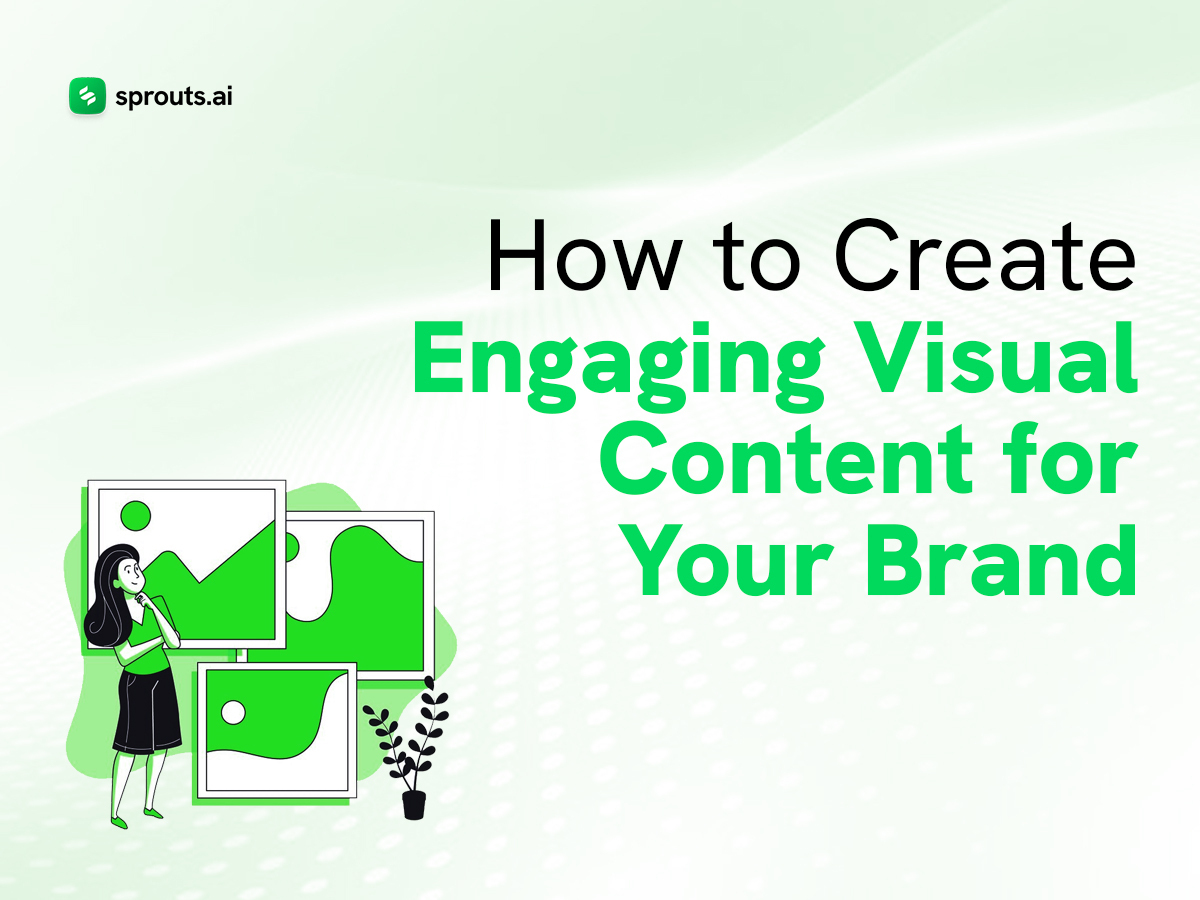Let’s face it, people love pictures. In a world flooded with content, grabbing attention is harder than ever. That’s why the Importance of Visual Content cannot be overstated. Visuals have become a crucial element in capturing attention, conveying messages, and driving engagement. For brands looking to stand out and connect with their audience, creating engaging visual content is crucial. But what does it take to craft visuals that truly resonate? Here’s an insightful blog on developing an effective visual content strategy and exploring various types of visual content.
Understanding the Importance of Visual Content
Visual Content is more than just aesthetically pleasing images or videos. It plays a significant role in shaping perceptions, influencing decisions, and establishing brand identity. Research shows that people process visuals 60,000 times faster than text, making it a powerful tool for communication. Content with visuals tends to get 94% more views than content without, underscoring the need for businesses to integrate visuals into their marketing efforts.
The Importance of Visual Content lies in its ability to:
- Enhance Engagement: Visuals attract attention and increase interaction. Engaging visuals are likely to be shared more frequently, expanding reach and visibility.
- Simplify Complex Information: Graphics, charts, and infographics can break down complex data, making it easier for your audience to understand and retain information.
- Strengthen Brand Identity: Consistent use of colors, fonts, and styles in visuals can reinforce your brand’s identity and make it more recognizable.
Developing a Visual Content Strategy
To create visuals that truly engage, you need a well-thought-out visual content strategy. This strategy should align with your brand’s goals and audience preferences. Here’s how to develop a robust strategy:
- Define Your Goals: Start by identifying what you want to achieve with your visual content. Goals could include increasing brand awareness, driving traffic to your website, or boosting social media engagement.
- Know Your Audience: Understand the preferences and interests of your target audience. What type of visuals are they drawn to? What colors, styles, or themes resonate with them?
- Create a Content Calendar: Plan your visual content in advance to ensure consistency and relevance. A content calendar helps you schedule posts and campaigns, keeping your brand active and engaged with your audience.
- Monitor and Analyze Performance: Regularly review the performance of your visual content. Use analytics tools to track metrics like engagement rates, click-through rates, and conversions. This data will help you refine your strategy and improve future content.
Strategies for Creating Engaging Visual Content
Creating engaging visual content requires more than just good design skills. It involves understanding your audience, leveraging creative techniques, and using the right tools. Here are some effective strategies for creating engaging visual content:
- Use High-Quality Images and Videos: Quality matters when it comes to visuals. Invest in high-resolution images and videos to ensure they look professional and appealing. Blurry or pixelated visuals can detract from your brand’s credibility.
- Incorporate Your Brand’s Identity: Consistency is key. Use your brand’s colors, fonts, and logo to create visuals that reflect your brand’s identity. This helps in building brand recognition and creating a cohesive visual experience.
- Tell a Story: Visual storytelling can be incredibly powerful. Use images or videos to tell a compelling story that resonates with your audience. A narrative approach can make your content more memorable and engaging.
- Leverage Infographics: Infographics are an excellent way to present complex information in a visually appealing manner. They combine graphics with data to make information more digestible and engaging.
- Create Interactive Content: Interactive visuals, such as quizzes, polls, and interactive infographics, can significantly boost engagement. They encourage your audience to interact with your content and provide valuable insights into their preferences.
- Optimize for Different Platforms: Tailor your visuals to suit different platforms and formats. What works on Instagram might not work on LinkedIn. Ensure your visuals are optimized for each platform’s specifications and audience.
- Use User-Generated Content: Encourage your audience to create and share content related to your brand. User-generated content can add authenticity and foster a sense of community around your brand.
Types of Visual Content
Understanding the various types of visual content available can help you diversify your approach and keep your audience engaged. Here are some popular types of visual content to consider:
- Images: Static images are a staple in visual content. They can range from product photos and behind-the-scenes shots to inspirational quotes and lifestyle images.
- Videos: Videos are highly engaging and can include everything from product demonstrations and tutorials to customer testimonials and brand stories.
- Infographics: Infographics combine visual elements with data to provide information in an easy-to-understand format. They are perfect for presenting statistics, processes, or comparisons.
- Gifs and Animations: Animated visuals can capture attention and convey messages in a fun, dynamic way. Gifs and animations are effective for highlighting key points or adding a playful touch to your content.
- Slideshows: Slideshows are useful for showcasing multiple images or pieces of information in a single post. They can be particularly effective for presentations or promotional content.
- Memes: Memes are a popular form of visual content that can be used to add humor or relatability to your brand. They are highly shareable and can increase engagement.
- Interactive Graphics: Interactive graphics, such as quizzes or clickable infographics, encourage user interaction and can provide personalized experiences.
Creating engaging visual content is an essential component of a successful digital strategy. By understanding the Importance of Visual Content, developing a solid visual content strategy, and utilizing various types of visual content, brands can effectively capture attention, convey their messages, and drive engagement. Remember to keep your visuals high-quality, consistent with your brand, and tailored to your audience’s preferences. Incorporating these elements into your content creation process can help you build a stronger connection with your audience and achieve your marketing goals. Start applying these tips today and watch your visual content make a difference in your brand’s success!

